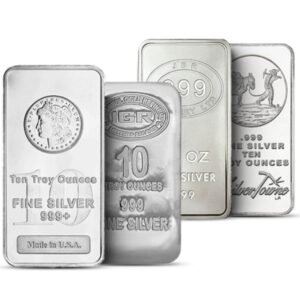Gold and Silver prices have experienced a tremendous amount of ups and downs in 2024. There were several global economic and geopolitical events controlled gold and silver prices in 2024. Following are some key factors that shaped the precious metals market this year:
Monetary Policy by Federal Reserve: One of the biggest factors influencing gold and silver prices this year has been the Federal Reserve’s change to a looser monetary stance. The Fed began cutting its interest rates in early 2024, after an aggressive rate-hiking cycle in early 2023, cutting it from 0.75% to 1%. Such cuts put the Fed Funds rate at 4.6% mid-year. Lower interest attracts non-yielding assets like gold, pushing demand and prices up. By May 2024, gold had hit 2,450$ per ounce, up 18% year-to-date.
Geopolitical Uncertainty: Sustained geopolitical tension has consolidated the position of gold as a safe-haven asset. This became evident through the Russia-Ukraine War, the war between Israel and Hamas, and the proxy attacks on U.S. assets by Iran. Classes of historic uncertainty have usually fired up the safe-haven asset classes, which, in turn, propel a rise in gold demand. The tendency was well reflected as gold surged upwards to peak at $2,450 in 2024.
Weaker U.S. Dollar: One more critical contributor to the rise of both gold and silver price has been the weakening dollar. As the U.S. economy showed signs of decelerating, the dollar could barely keep pace, thus offering a potential shine for precious metals to international investors. This has especially supported silver, which jumped 35% year-to-date to $31.60 per ounce by mid-2024.
Industrial Demand for Silver: In 2024, supply tightness in its dual role within both the precious metals and industrial commodity markets placed greater upward pressure on prices. This is due to its importance in the evolving technologies such as electric vehicles, solar panels, and even AI. Silver, therefore, saw its prices surge by over 30% this year due to increased industrial use and supply constraints. Such industrial applications most probably will keep the demand for silver high, especially in some transitional period when the world is turning more and more to renewable energy and advanced technologies.
Supply Constraints and Market Deficit: Complementing the demand side, there is a marked supply deficit that has supported the upward spiral in silver prices. 2024 is expected to post the second-largest deficit in the silver market in more than two decades. Mining hazards and delays in projects, along with increasing industrial demand, have combined to create an imbalance between supply and demand, hence pushing up the price sharply.
All in all, 2024 has been a dynamic year in both gold and silver, largely driven by monetary policy shifts, geopolitical instability, industrial demand for silver, and supply shortages. Gold traded at $2,450 per ounce at mid-year, while silver suddenly leaped over $31 per ounce, amidst a wider economic and geopolitical landscape.
 Hi,
Hi,











